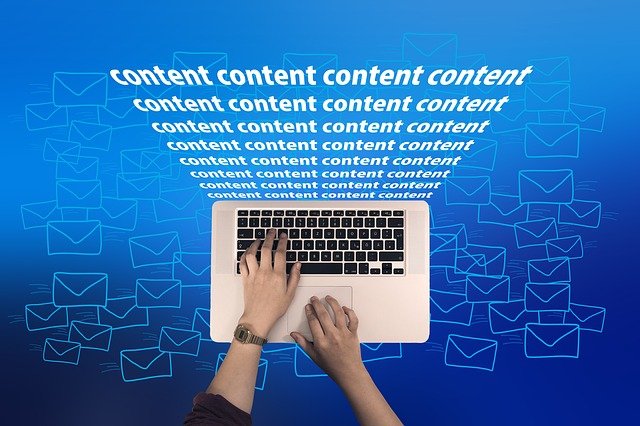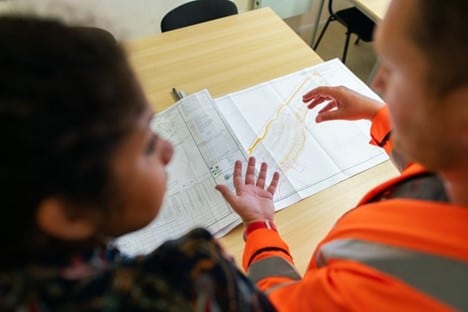
Copywriter Q&A: Barbara Adams Shares Tips and Tricks for Making Highly Technical Content Accessible to a Broad Audience
COPYWRITER Q&A: BARBARA ADAMS SHARES TIPS AND TRICKS FOR MAKING HIGHLY TECHNICAL CONTENT ACCESSIBLE TO A BROAD AUDIENCE
Barbara Adams is an award-winning writer with more than 30 years of technical writing experience. Her portfolio includes hundreds of whitepapers, case studies, trade articles, op-eds, books, and brochures. And at TWFH, Barb is our go-to authority for all things technical.
For this installment of Copywriter Q&A, Barb talked to us about the art of making technical content accessible to a broad audience.
TWFH: What is the biggest issue with content that is too technically written?
Unless you’re writing a textbook and you can assume everyone has taken the prerequisite courses and is speaking the same “language,” the risk of making an article, case study, or even a white paper too technical is that you will lose readers.
People read with their self-interest in mind, and if they don’t feel they’re getting information they can use – or they have to work too hard to get it – they’ll tune out.
I write a lot of articles for a client who develops simulation software – the most high-level technical products I’ve ever written about. And even though readers are design engineers, they are specialized, and I can’t make assumptions about what they know.
Not everyone works with fluid dynamics, for example, so I have to explain it, without insulting anyone’s intelligence.
TWFH: What are some examples of situations when content should be simplified for a broader audience?
Marketing pieces are a good example of when content needs to be simplified.
You don’t need to know how to make a watch to tell time. But, as I mentioned, even technical white papers can benefit from a little explanation of terms.
It’s wrong to assume everyone knows as much as the author who did the work or experiment does.
TWFH: Is there a way to “dumb it down” without losing the intended message?
I’m not a fan of the expression “dumb it down,” but I understand what you’re asking.
Translating a highly technical piece to a consumer audience is probably the only place where we’d have to make the language super simple and focus more on what happens because of technology —the benefits —rather than explain in great detail how the technology works.
TWFH: What are some ways to simplify language so that a broader audience will understand it?
I’m a big fan of analogies rather than simplifying language. Technical things are called what they are called – I’m not sure there’s a way to simplify the words “calculating the fluid forces on the wave-forming device,” which is something I wrote about, but you can provide an analogy.
People understand that when they put their hand in a container of water, the water will move and how much it moves depends on how hard they push their hand down.
TWFH: When writing technical content for a non-technical audience, should unfamiliar terms be defined? Or is it better to just stick with terms that are not so technical?
That is an excellent question. I would vote for using technical terms and defining them. The client will be communicating with the audience multiple times, I imagine, and if you start introducing non-technical terms, you have to remember them and what they meant and why you used them.
As a parallel, consider lying versus telling the truth. If you tell the truth, you just have to remember what happened. If you lie, you have to remember what really happened and then what you said happened, and that’s a lot more difficult. Heady stuff, right?
TWFH: Do you suggest integrating visuals with technical instruction to help illustrate concepts?
Yes! But then make sure the cutline (or caption) explains what the reader is looking at.
A white paper cutline that says, “The model of the experiment,” isn’t as useful as one that says, “The experiment did A, which resulted in B.”
TWFH: This is all wonderful information! Do you have any other tricks or tips for making technical content more accessible?
Organizations are often siloed – one group doesn’t necessarily know what another is doing, or they have expertise about a topic that is housed in just one department.
If a client and I are trying to work out whether the content is accessible or not, I might suggest they run an early draft by a counterpart in a different department. It never hurts to have another set of eyes on your copy.
Related Content
- 0 Comment
Subscribe to Newsletter
- How Can SharePoint Be Used To Organize and Disseminate SOPs?
- Planning the Perfect Genealogy Research Trip: A Step-by-Step Guide
- From Silly to Awesome: How Words Change Meaning Over Time
- The Psychology of Font Choice: How Typography Impacts Content Engagement
- How to Distribute SOPs for Maximum Usability





